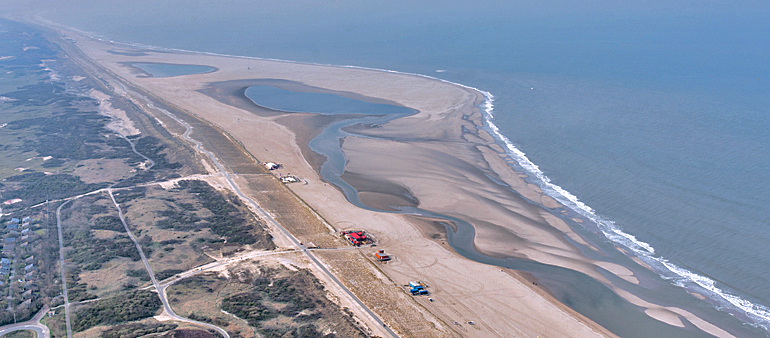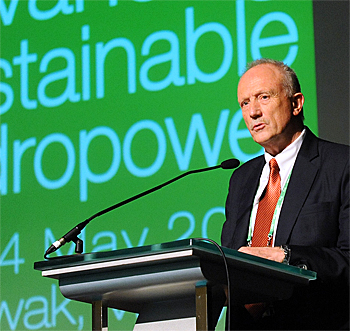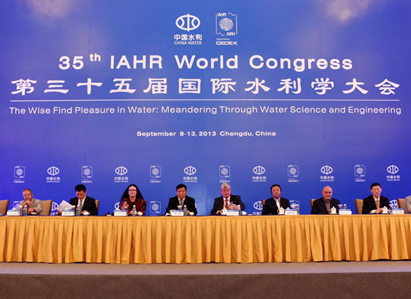World gathering of hydro engineers at IAHR World Congress 2015 in The Hague
 Over 1400 hydro-engineers from all of the world are expected to gather at the 36th edition of the annual world congress of the International Association for Hydro-Environment Engineering and Research (IAHR) in the Hague, the Netherlands.
Over 1400 hydro-engineers from all of the world are expected to gather at the 36th edition of the annual world congress of the International Association for Hydro-Environment Engineering and Research (IAHR) in the Hague, the Netherlands.
The conference started on Sunday 28 June and will last until Friday 3 July. This year’s theme is 'Deltas of the future and what happens upstream'.
Obvious theme
Chair of the Local Organizing Committee of the congress is professor Arthur Mynett at Unesco-IHE water education institute. “As this year’s edition takes place in the Netherlands, it was obvious to select this issue as our central theme”, he says.
The programme is enriched with many workshops, short courses and master classes at Dutch knowledge institutes and excursions to many famous Dutch coastal protection works.
 Organiser of the 36th edition of the IAHR world conference professor Arthur Mynett of Unesco-IHE.
Organiser of the 36th edition of the IAHR world conference professor Arthur Mynett of Unesco-IHE.
China biggest delegation
Mynett is very enthusiastic about the participation by delegates from all over the world. “This year we have an exceptional large delegation from China. Usually the host country has the most participants, but this time there are more Chinese than Dutch participants”, he reveals.
Whether this has something to do with the 2013 edition in Chengdu, China, Mynett cannot say. Fact is that he delivered there a keynote on how the Dutch are able to keep their delta liveable.
“The biggest achievement is that the water management is constantly developing with new concepts such as Room for the River and Building with Nature. Therefore the Dutch have the world a lot to offer when it comes to knowledge and expertise on land and water management in low-lying densely populated river deltas.”
Urban expansion not without consequences
Mynett mentions that land and water management in delta areas is of growing importance. “It is anticipated that half of the world population will eventually live in cities. As many of them are located near the coast, this cannot develop without consequences for the water management. Too often urban expansion plans neglects flood risks and limited fresh water resources. The selection of new building areas is done on topographic maps, not on hydrological or relief maps.”
Hydro-engineers will have a huge task to avert all these water-related risks. The early involvement of hydro-engineers in the urban development planning is one of the many issues on the programme of the conference. Mynett: “They can link urban development to a sustainable management of water resources”.
 The 2013 edition was held in Chengu, China and had the theme 'The wise find pleasure in water'.
The 2013 edition was held in Chengu, China and had the theme 'The wise find pleasure in water'.
Using natural conditions
An issue that gained interest on the IAHR World Congress in recent years, is a more natural way of engineering. In the Netherlands this has evolved in the concept of Building with Nature. The best known example is the Sand Engine, an innovative beach nourishment project along. A peninsula has been created on the beach and nature – with tide, waves, wind - is now slowly spreading the sand along the whole Dutch coast.
Natural river flow
Related to this issue is the key note by professor Zhao-Yin Wang of the Department of Hydraulic Engineering of Tsinghua University. Mynett: “Wang will speak on Friday and will explain his remarkable view on rivers. It is his belief that rivers have a natural stability and if you restrain a river, it always wants to flow back. His advice is to build in harmony with the natural flow of a river as much as possible.”
Mynett emphasizes that hydro-engineering and research is more important than ever. And not only flood protection. “We have also sessions on droughts. This is a hot topic. The current situation in California shows that drought can economically be more damaging.”
More information
36th IAHR world conference
www.iahr2015.info
app.iahr2015.info



